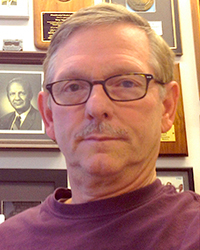
Tony Yaksh, PhD, MS
Tony Yaksh, PhD, MS, Professor and Vice Chair of Research at the University of California, San Diego, explores this pain conundrum when he delivers today’s “FAER-Helrich Research Lecture: Why Is Pain Such a Tough Nut to Crack?: A Mechanistic Perspective on Our Emphasis upon Neuraxial Processing.”
Over the course of his decades-long career, Dr. Yaksh has investigated the mechanism of pain, including mechanisms of opiates and non-opiates in the modification of central nervous system pain processing, the basic physiology of unmyelinated fibers of the nervous system, and neurotransmitter release.
Dr. Yaksh developed an intrathecal drug delivery model to administer spinal drugs in rats that remains widely used today. He also characterized the physiology and pharmacology of the release in vivo of substance P in the spinal cord as well as the action of spinal capsaicin that leads to persistent analgesia. His research then and since provided the first body of work emphasizing the distinct pharmacology that defines the organization of sensory processing for pain input. His work led to the spinal use of opiates and other targets in pain management.
FAER-Helrich Research Lecture: Why Is Pain Such a Tough Nut to Crack: A Mechanistic Perspective on Our Emphasis upon Neuraxial Processing
2-3 p.m. CT
Saturday, October 3
Dr. Yaksh has received numerous awards for his work, including the ASA Award for Excellence in Research in 1995, the UC San Diego’s Chancellor’s Associates Faculty Excellence Award in Research (1999), and the 2012 Presidential Commendation from the World Institute of Pain. He has written more than 800 papers and has been funded for nearly 50 years (twice receiving the NIH Javits Award) through both private and public grants.
On top of his voluminous and pioneering research, Dr. Yaksh is also recognized by his colleagues for his efforts to “lift all boats around him.” Ruth Waterman, MD, MS, a colleague at UC San Diego, said of him, “Well before many of his peers, Tony promoted female colleagues and students, placing them on committees, nominating them for lectures, and providing them opportunity for recognition. Many of our clinician-scientists have Tony to thank for being a sounding board to discuss career moves, outline projects, and talking up their projects in research forums.”
Return to Index